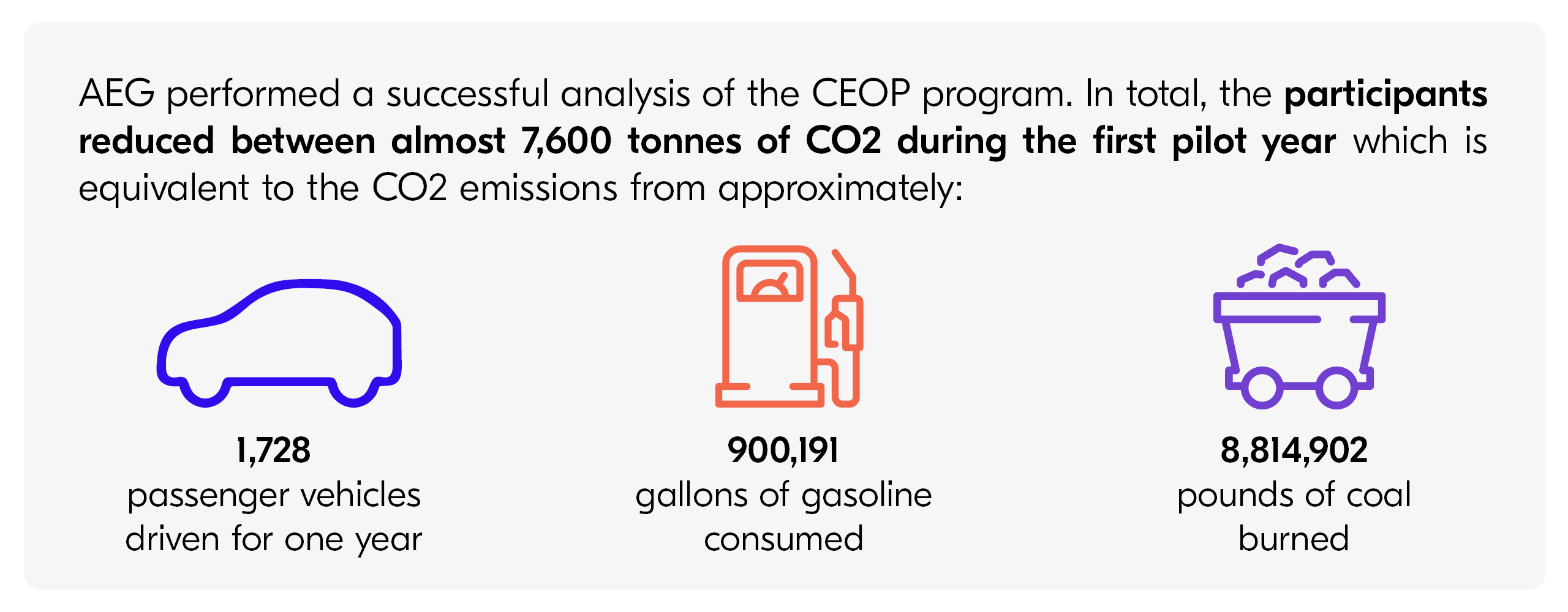Challenge
Our industry is changing, shifting its focus from programs that encourage energy conservation to those that encourage decarbonization. This change is a key step in aligning customer-facing programs with State, County, and Utility emissions reduction goals and it necessitates a change in the way we measure our success. California’s state goals require a 40 percent reduction in GHG emissions below 1990 levels by 2030 and an 80 percent reduction in GHG emissions below 1990 levels by 2050.

Opportunity
Incent and accelerate on-site, behind the meter opportunities.
Solutions
AEG looked at SCE’s groundbreaking Clean Energy Optimization Pilot (CEOP) from an evaluation perspective. We will share an overview of our approach to measuring changes in GHG emissions over time, including the development of normalized consumption models, quantification of baseline emissions, consideration of electrification of vehicle fleets and building systems, and some lessons learned from executing this approach during the first program year. In addition, we can share some of the key findings from interviews and on-site visits with pilot participants which might be applicable to those considering piloting similar programs in other areas of the country. It will offer the reader a unique look into one of the first pilots to focus solely on GHG reductions from both an evaluation and performance incentive perspective.
Looking to learn more about AEG services or solutions?
Talk with one of our experts today.
